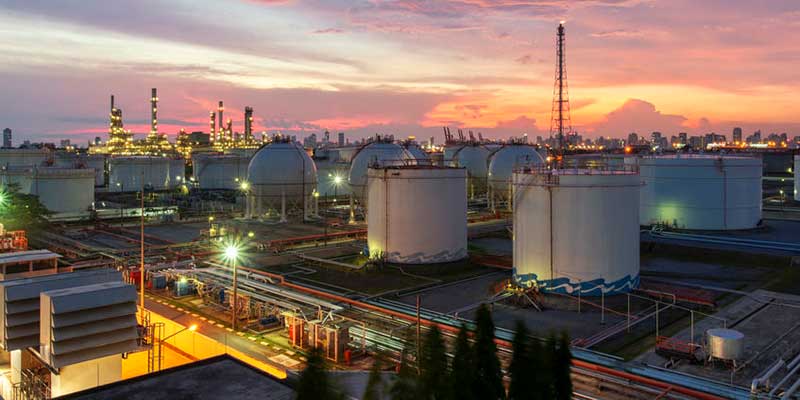In addition to water reuse’s potential in petroleum refining processes, the extensive plants can benefit from reuse of sewage, as well as wastewater from machine shops, laundries, and more.
Refineries can be like cities, and opportunities for water reuse abound, from recycling of process water to sewage
Although the water requirements of oil exploration make water reuse a hot topic for the upstream petroleum industry — the exploration and production end — there are significant opportunities for reuse downstream, which includes refining.
Petroleum refineries are generally in coastal areas near a river mouth, both to take advantage of water resources and to improve transportation cost structures. In the United States, refineries are concentrated along the Gulf of Mexico and the West Coast, with California and Texas as the largest players. But the heavy refining regions of each state are arid. Supplying fresh water for operations in these parched areas can be challenging, which makes water reuse a natural fit for the industry.
Water Use in Petroleum Refining
How much water refineries use depends on which processes are involved. Cracking, light coking, and heavy coking are typical refinery configurations that process different qualities of crude oil, with water consumption at 0.34, 0.44, and 0.47 barrels of water per barrel of crude oil, respectively. Gasoline production is the largest water consumer at 0.60–0.71 gallons of water per gallon of gasoline, and jet fuel refining requires the least, at 0.09 gallons.
Up to 10% of the energy contained in crude is used to refine it, and much of that energy is rejected as thermal energy loss during cooling. So, a great deal of water is used in production of petroleum fuels during processing and cooling. Water cooling can be achieved three ways:
- An open-circuit system puts water through a heat exchanger and then discharges it again near its source.
- Semi-open circuit systems use heat exchangers and cooling towers that release heat through steam.
- Closed circuit systems recirculate a fixed volume of water through cooling towers.
Generally, water for petroleum fuel production is sourced from groundwater, canals, rivers, lakes, and sometimes partially from the ocean. Although refineries are generally located near an unlimited supply of saltwater, and desalination is becoming much more efficient and affordable at all scales, water reuse is often an attractive option to desalination or an ideal complement to it.
Before it’s used, untreated incoming water must be treated to remove minerals, particles, gases, and suspended particles. Treatment begins with a rough filtration screening operation, followed by flocculation to remove tiny particles and sediment. The water is then continuously filtered.
Petroleum Refinery Wastewater Streams
Petroleum refineries generate multiple wastewater streams:
- Desalter water, a byproduct of washing raw crude before topping
- Sour water, or water used in steam stripping and fractionating that comes into contact with crude
- Process water from product washing, regenerating catalyst, and dehydrogenation reactions
- Spent caustic from the extraction of acidic compounds, which are difficult to directly reuse and treat
- Tank bottoms, (periodically removed sediment and water from raw crude tanks)
- Blowdown water, that is, cooling tower water in which impurities are concentrated as water evaporates.
- Byproducts of water treatment methods including sludge dewatering, ion exchange regeneration, and reverse osmosis
Stormwater falls in both process and nonprocess areas alike, and the runoff can be reused or otherwise managed. Ballast water from tankers must also be managed to prevent introduction of disease and invasive species.
A Refinery Is Like a City
Refineries can be expansive and may outshine nearby cities at night. According to “An introduction to water reuse in the petroleum industry,” modern refineries are, indeed, like full-fledged cities with correspondingly diverse relationships to water.
In a refinery, one might find food services, laundry services, and streets and roads with stormwater sewers and harvesting opportunities. On-site machine shops, airports, and of course swimming pools need water. For refinery staff, there are medical clinics, living quarters, and tap water. Where there are people there is sewage, and where there is sewage there are opportunities for wastewater reuse. Petroleum refineries have water access like cities but also have access to produced water, a byproduct of the pumping of oil and gas. It occurs both naturally and is sometimes injected to facilitate extraction.
Modern refineries — cities unto themselves — have a multifaceted relationship to water, and opportunities for efficiency through reuse are abundant. Contact the Fluence team to learn more.

